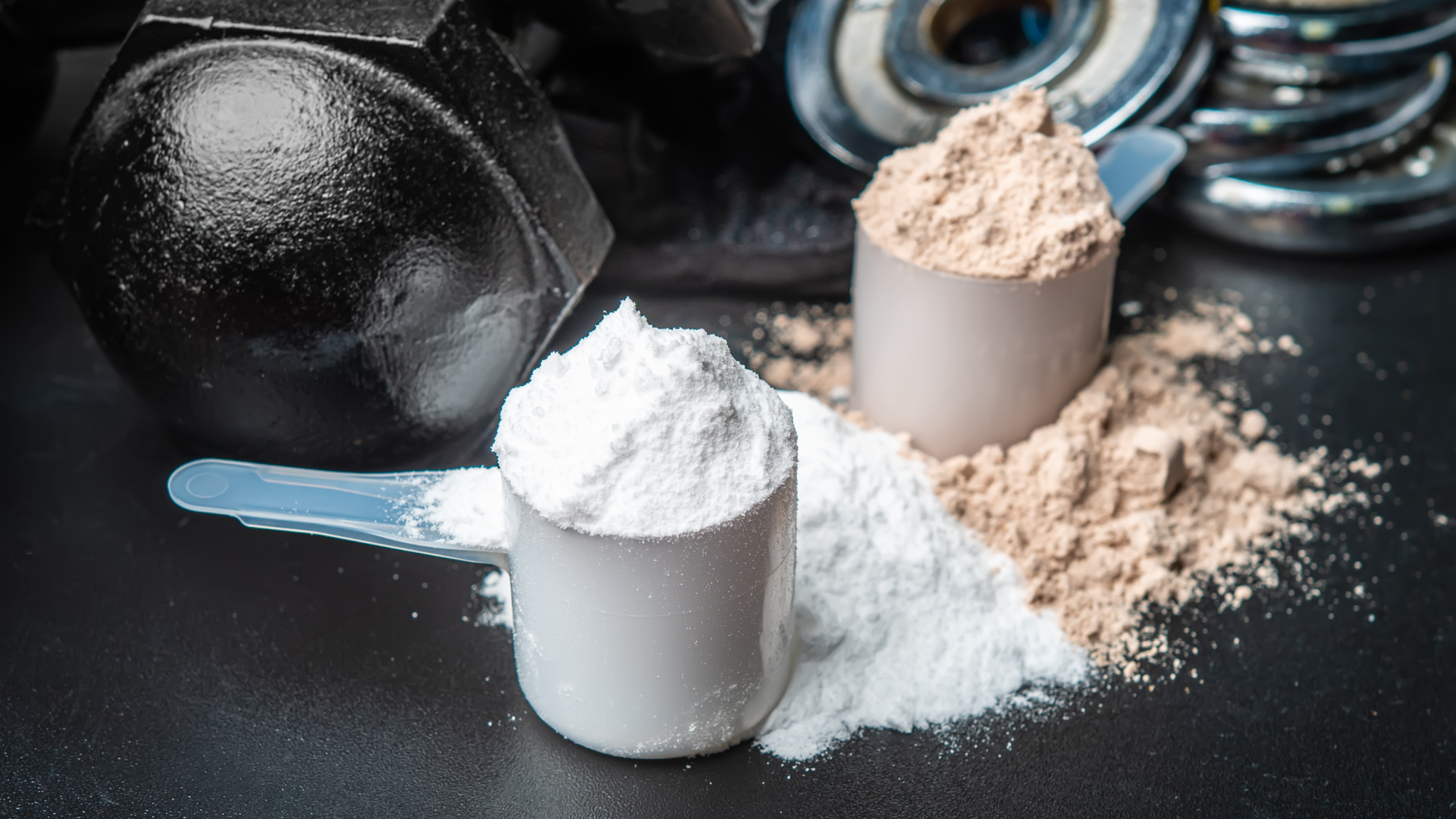Grab your cheat sheet |
Whey protein is one of the most popular and common types of protein and with good reason.
But did you know that there are multiple different types of whey protein, one of those being whey hydrolysate?
It’s easy to think of whey protein as just one thing and assume that all the different variations are offering your the same variation, nutrients and quality, but actually, they are quite different products with different benefits.
And you will usually see this reflected in the price (with hydrolysate the most expensive of the three types).
So, in this article, we’re going to explore what whey protein hydrolysate is and why you might want to get it over other types.
What is whey protein?
So, first things first let’s explore whey protein as a whole, before diving into hydrolysate.
Whey protein is one of two proteins derived from cow’s milk (the other being casein protein), making it an animal protein. It is filtered to create a high-quality protein supplement that helps you build muscle, recover after a workout and maintain a lean body mass.
Whey protein is known as a complete protein, meaning it contains all nine essential amino acids. Amino acids are the building blocks of protein, and our body uses around twenty different types.
We are capable of synthesizing most of these, apart from nine that we need to get from dietary sources - the same nine that are in whey protein.
What are the different types of whey protein?
There are three different types of whey protein:
- Whey protein concentrate
- Whey protein isolate
- Whey protein hydrolysate
Whey protein concentrate
The most basic form of whey protein, which has undergone the least processing, is whey protein concentrate. It is also the cheapest to buy. It has around a 65-75% protein concentration which is lower than the other two types we will discuss.
This doesn’t necessarily mean it is of a lower quality. It simply means that more of the non-protein nutrients (healthy fats and sugars) have been left in. This is beneficial for your body in different ways, such as supporting cardiovascular function and your immune system.
This is the type of protein that you will most commonly see sold, and it’s worth noting that it is often the cheapest of the three due to the lack of processing and lower protein content. So, remember that not at the protein you see, and the associated costs with be comparable - that’s why it’s important to understand the differences between the three to choose the one which is best for you.
If you simply want the highest protein concentration possible, it is worth considering the other two forms of whey protein - whey protein hydrolysate and whey protein isolate.
What is whey protein isolate?
Whey protein isolate is made by further filtering and processing whey protein concentrate to remove almost all of the fats and lactose from the product. This gives at least a 90% protein concentration product, and it is the purest form of whey protein.

There is more protein available to be digested, which can provide some benefits over whey protein concentrate. The downside of whey protein isolate is that all these extra steps increase the cost of the product.
What is whey protein hydrolysate?
So now we get to the focus of this article, whey protein hydrolysate. The goal here is to create a product with a similarly high concentration of protein which is even easier for our body to digest.
A combination of heat, acid and/or enzymes are used to pre-digest the amino acids in the protein so that our body can digest them rapidly. This creates a rapid source of energy for our hard-working muscles.
Whey protein hydrolysate also has a very low lactose content, so many people with lactose intolerance find that they can digest it just fine.
The catch? The improvements are fairly minimal, even compared to whey protein concentrate, but the price difference is anything but!
The benefits of whey protein hydrolysate…
You might choose to take the hydrolysate version of whey protein over others for a few reasons.
The main benefit is that it’s more available for your body to use, meaning that it can contribute to muscle synthesis more efficiently. This is largely due to the amino acid structure.
Amino acid structure
Let’s look a little closer at the science of this amino acid pre-digestion. Amino acids found naturally in proteins are chained together in long structures called peptides. When we drink whey protein concentrate or whey protein isolate, the proteolytic enzymes in our body have to break down these peptide chains to create protein hydrolysates before we can make use of them.
The process which creates whey protein hydrolysate is an artificial version of this process i.e. the manufacturers do the enzymatic hydrolysis to break the peptide bonds on our behalf.
This creates lots of free amino acids which are ready for our body to use. The breakdown of proteins into protein hydrolysates also destroys allergens and improves digestion.
The drawback of this is that some of the free amino acids create a bitter taste when released from their peptide chain. So some find that whey protein hydrolysate shakes aren’t as pleasant to drink.
This means that whey protein hydrolysate is the most bio-available form of whey protein, ready for your body to use to repair and build muscle.
Better for allergens…
Due to the processing that whey protein hydrolysate undertakes, a lot of the lactose content is removed. It has the lowest content of lactose, and so might be more suitable for those with lactose intolerance.
Although there is still some present in whey in general (as it’s made from milk), it’s usually low enough that most people can consume it without any adverse side effects.
However, it’s worth going with what your body allows and consulting a physician if necessary - but if any of the wheys will be alright, it will likely be hydrolysate due to its lower lactose content.
Lower fat content
If you are cutting and trying to lose weight, then you’ll not only want to be mindful of your calories, of the macro-nutrient content.
Whey protein hydrolysate has less fat content than concentrate and isolate, meaning it’s likely going to help you build muscle and stay lean.
Who is hydrolyzed whey protein for?
For the average gym go-er hydrolyzed whey might be overkill. However, if you have serious muscle-building goals, you might find it difficult to get all the nutrients you need in the right amount from food alone.
This is where whey protein hydrolysate comes into its own, as it’s great for anyone looking for a high-quality protein source to help improve muscle growth.
And in addition, it will build muscle without significantly increasing the amount of fat you are consuming - so it is great for cutting or shredding.
How much whey protein hydrolysate should you take?
Exactly how much-hydrolyzed whey protein you should consume will depend on your body weight, total dietary protein intake and your goals.
It’s estimated that if you are trying to build muscle, you should take around 2g of protein per kg of body weight. So, you’ll need to roughly work out how much protein you eat and then subsidize this with your whey protein powder.
Due to the leucine content in hydrolysate, you won’t need to consume as much to increase muscle mass as you would from food sources.
For example, one scoop of whey protein hydrolysate post-workout will likely have the same effect that a full chicken breast would - but with a smaller gram size.
Are there any downsides to whey protein hydrolysate?
The main downside (for some) is that it’s more expensive, which makes sense due to the increased processing and protein content and the increased bioavailability.
Because of this, it’s usually around 20-30% more expensive than its standard whey protein, so it’s about deciding whether this increase in price is worth it for you.
In addition, and somewhat paradoxically, the bio-availability of the amino acids is beneficial for protein building; however, it also increases amino acid oxidation i.e. breaking down amino acids for energy.
It’s not necessarily a downside. However, it is something to consider as they are more likely to be used for energy than stored.
Should I use whey protein hydrolysate?
The first thing to remember when searching for protein is that not all protein is made equal. When shopping around, it’s easy to assume that anything with whey in the title is the same.
But the reality is that most products are pure whey concentrate, meaning it’s cheaper, but it may lack the benefits of some more processed whey products such as hydrolysate.
So, should you invest in a whey protein hydrolysate?
It depends. If you are a professional bodybuilder or weightlifter who does a great deal of resistance training almost every day, you might see a small benefit in using whey protein hydrolysate over whey protein isolate or whey protein concentrate. For the average gym-goer, however, it’s unlikely that you need to take it on a regular basis.
However, there is another solution.
Why not use a variety of forms of protein?
And no, we don’t mean you have to buy three different tubs of protein powder every month; we always advocate keeping things simple!
Instead, purchase a product that has a mixture of different forms of whey protein and enjoy the benefits of all of them. In fact, this is an instance where the sum of the parts is greater than the whole. The different levels of processing described in this article lead to different digestion rates across whey proteins. By choosing a product that has different forms of protein, you get a more steady flow of protein to your muscles over a longer period of time. This improves muscle protein synthesis and muscle recovery.
The Crazy Nutrition TRI-PROTEIN formula breaks down into 3 phases so that your muscles receive more energy and strength than regular whey. While it isn’t the cheapest form of protein powder, it is a much better value than pure whey protein hydrolysate. It contains no unnecessary additives and will help athletes reach their health and fitness goals.


